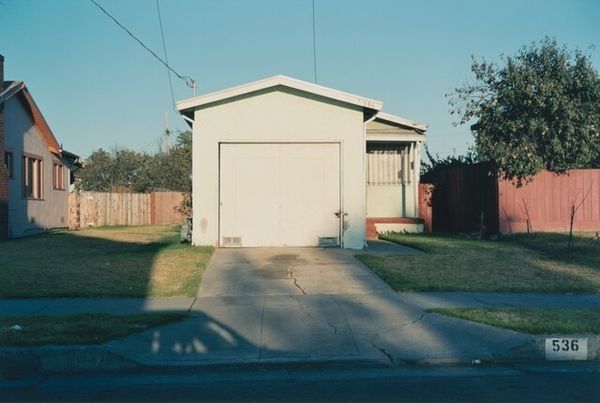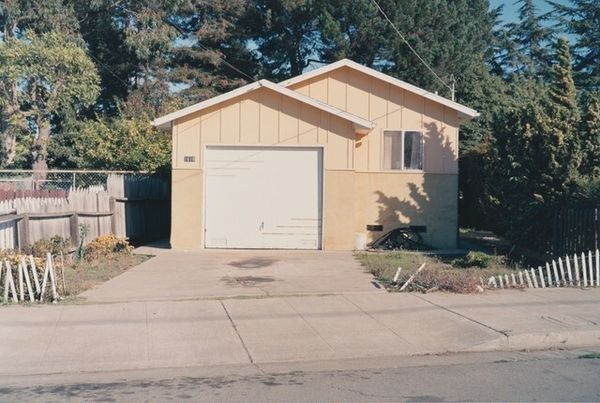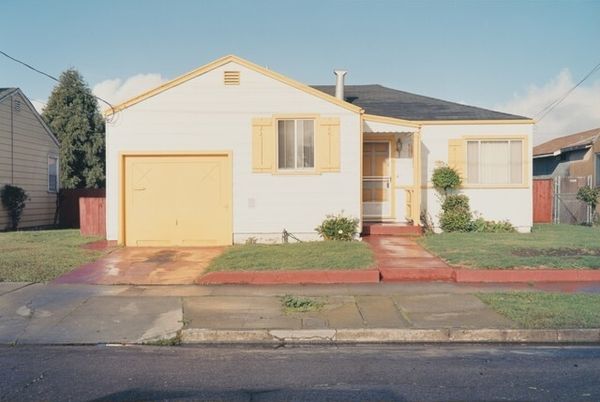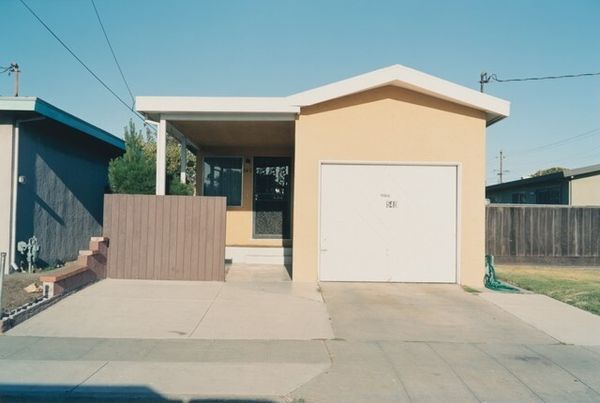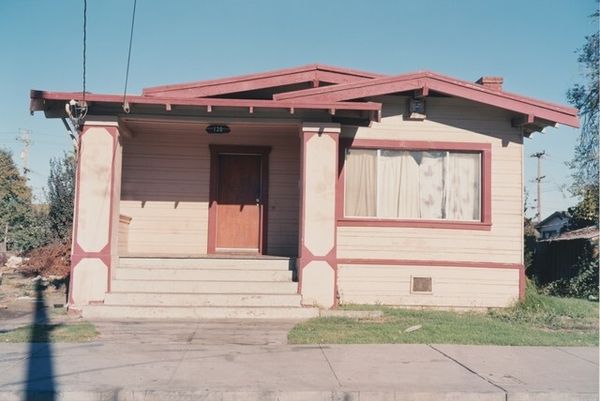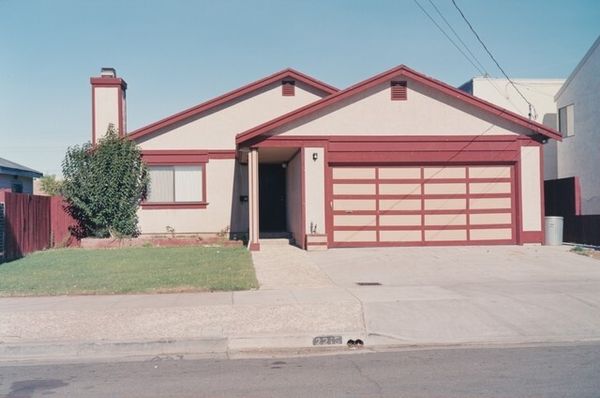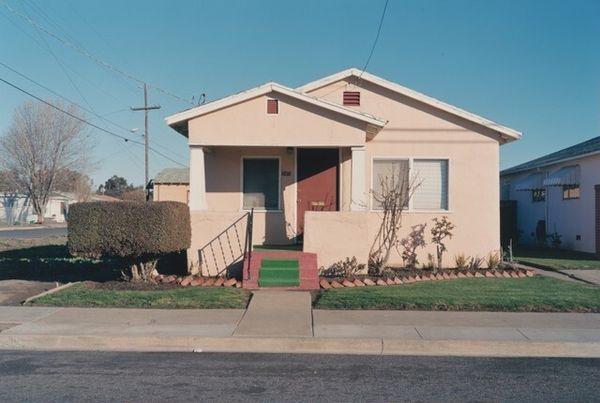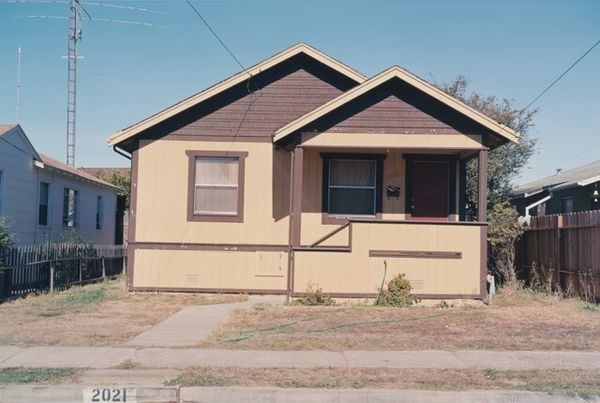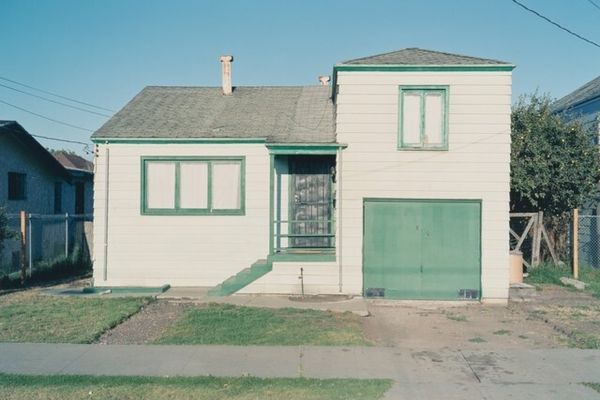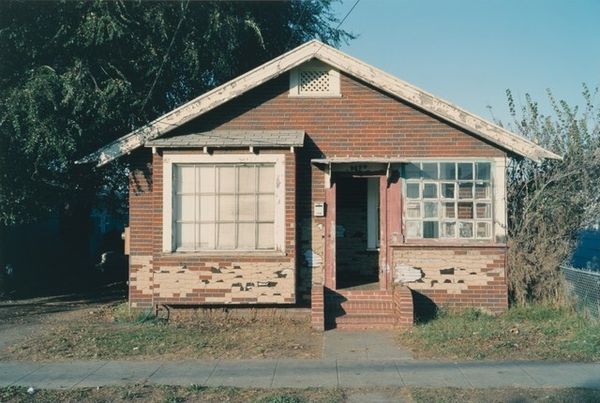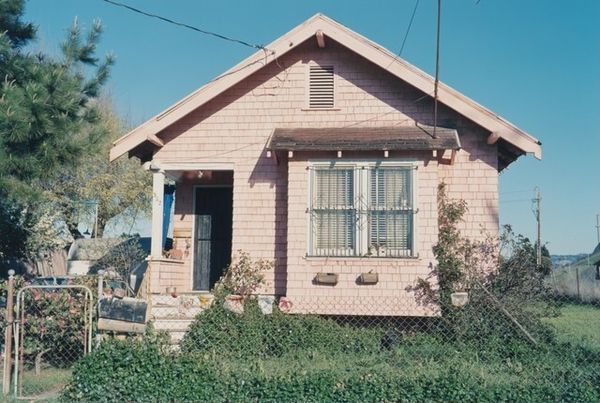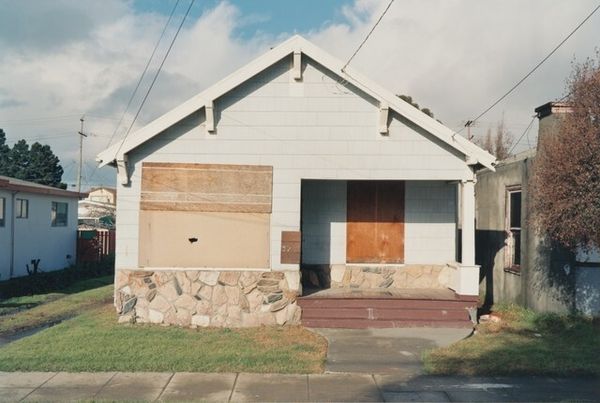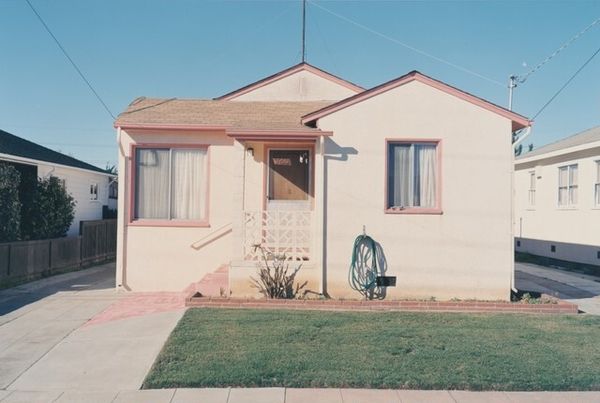
photography
#
contemporary
#
landscape
#
outdoor photography
#
photography
#
cityscape
#
realism
Dimensions: image: 15.24 × 22.86 cm (6 × 9 in.) sheet: 20.32 × 25.4 cm (8 × 10 in.)
Copyright: National Gallery of Art: CC0 1.0
Curator: Standing before us is "Real Estate #905718" by Henry Wessel, snapped in 1990. It’s a seemingly straightforward color photograph. My first reaction, though, is that the scene feels very…staged, almost like a film set. There’s an unusual flatness to it. Editor: Flatness is key. The material construction here is telling: stucco, wood, concrete, green paint deliberately applied as if stamping identity on this building, defining its volume. But it does lack depth, even in terms of the suburban design that shaped it, the cheap lumber, mass-produced… the assembly. Curator: It feels generic, doesn't it? Look at the shadow creeping in – it emphasizes that very ordinariness, this visual inventory of suburban sprawl. It raises questions about the post-war American Dream, this idea of homeownership sold en masse. The limited color palette seems intentional, amplifying the monotony. What’s being produced and consumed here is conformity, through aesthetic restrictions and cheap materiality, no? Editor: Precisely. There’s a kind of violence to its ordinariness. Look how the architecture facilitates racial segregation via inflated property values that uphold power and capital, no less. The house becomes a physical boundary enforcing systemic disparities in urban and societal planning. And by titling it with an official numerical signifier, Wessel frames all that within market constraints and valuation. Curator: So, it’s not just a house but a commodity, indexed, tracked, its value extracted from its occupants, even before we consider that a good number of those would be displaced due to rising prices… Editor: Exactly! The land under threat is also invisibly materialized in this image! Think too about the labor that built it. Who profited and how? Consider who bears the weight of these structures. These details, like the color of the roof that almost mocks nature's shade and beauty, it’s all embedded within the structure of what a photograph can hide behind its seeming realism. Curator: It encourages us to dissect the facade, doesn’t it, and not to overlook the underlying power structures encoded within even this simple suburban scene. Editor: Absolutely. Wessel compels a critical examination of both the tangible and the intangible resources that intersect at one suburban American property line.
Comments
No comments
Be the first to comment and join the conversation on the ultimate creative platform.
